#new dinosaur
Text
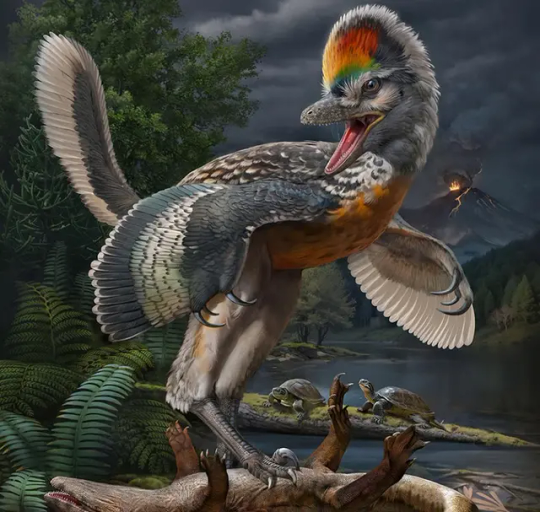
Chuang Zhao's depiction of the newly described Fujianvenator is everything
and the volcano is actually accurate for once!
844 notes
·
View notes
Text
Minimocursor
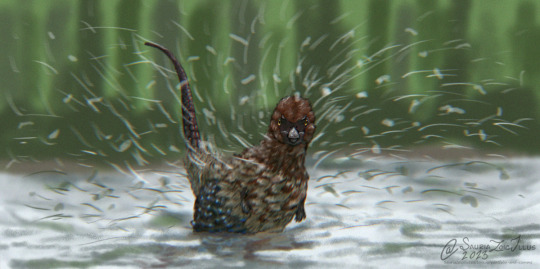
a new dinosaur was described today from Thailand!
Meet Minimocursor phunoiensis, described by Manitkoon et al., (2023), congrats on the description!
#paleoart#digital art#digital illustration#palaeoart#paleontology#artists on tumblr#digital artwork#sciart#dinosaur#scicomm#science communication#new dinosaur#id in alt text#alt text
337 notes
·
View notes
Text
Wake up babe, new dinosaur just dropped
https://www.sci.news/paleontology/garumbatitan-morellensis-12306.html
96 notes
·
View notes
Photo

New dinosaur alert! Presenting Mbiresaurus raathi
Image ID: A digital illustration of the early sauropodomorph dinosaur Mbiresaurus. It is a slender, two-legged dinosaur with a long neck and tail and a body covered in fluffy feathers. The feathers are brown with lighter speckles that turn into stripes on the tail. The head and neck are wrinkled and featherless except for a few long feathers that hang from the base of the neck. The head and neck are coloured with patches of black and white, and an orange lower jaw. The Mbiresaurus is posed in a rough three-quarter view, facing to the right and away from the viewer. The neck is upright and alert, the mouth is slightly open, one foot is raised off the ground and the tail is curved around in front of its legs. End ID.
A newly-described species from Zimbabwe, Mbiresaurus is now the oldest named dinosaur species from Africa! It’s an early sauropodomorph, related to dinosaurs like Eoraptor and Buriolestes, and was probably an omnivore.
Mbiresaurus comes from a new fossil site in Zimbabwe, which contains a whole lot of other species that have yet to be described, including a herrerasaurid, which I’ve represented in this size diagram with Staurikosaurus.

Image ID: A size chart showing Mbiresaurus and the early carnivorous dinosaur Staurikosaurus next to a light grey silhouette of a person. The Mbiresaurus’ head is level with the person’s upper thigh, and the Staurikosaurus’ head comes to approximately waist height. End ID.
The formation also includes a number of synapsid species, a rhynchosaur, and an aetosaur, a group of armoured herbivorous crocodile relatives that had never been found in southern Africa before! When combined together into Pangaea, the location of the fossil site matches the latitude of other Late Triassic early dinosaur sites, suggesting that dinosaurs and other Late Triassic species initially migrated across a similar climatic band that would eventually become South America and southern Africa.
#dinosaurs#paleoart#paleontology#new dinosaur#palaeoblr#mbiresaurus#sauropodomorph#triassic#fossils#prehistoric
593 notes
·
View notes
Text
So a new species of dinosaur was just discovered and uh……. They named it Gremlin. Gremlin slobodorum…….
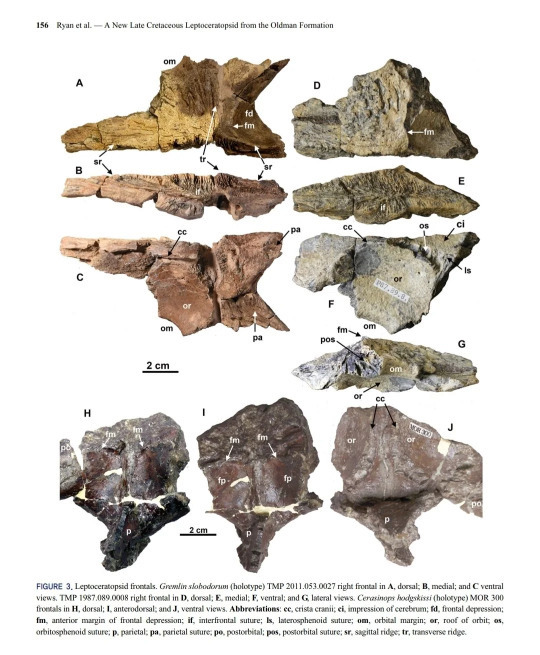
So Gremilin slobodorum is a species of leptoceratopsid ceratopsian dinosaur that lived during the Campanian stage of the Cretaceous period around 77 million years ago. Its fragmentary remains were first found in the Oldman Formation in Alberta, Canada and were originally thought to have belonged to a different genus of small ceratopsian called Cerasinops since their remains have been found in rock layers around that same age.
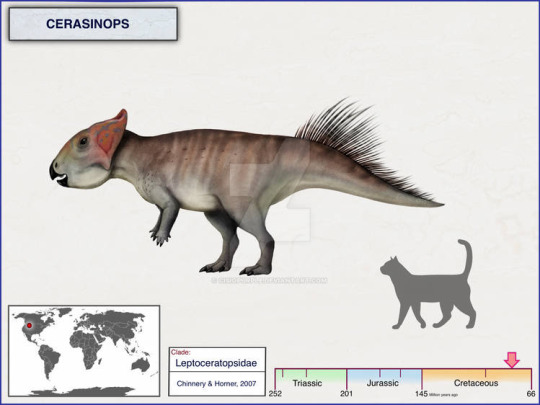
(Cerasinops compared to a modern house cat. Art by cisiopurple on Deviantart)
However, it was just recently discovered to be a completely new genus and so it was given the name: Gremlin slobodorum. The genus name “Gremlin” obviously refers to the mischievous mythical creature while the species name “slobodorum” is in honor of Ed and Wendy Sloboda who were both involved in the discovery of the holotype specimen.
If I’m being honest I don’t really like the genus name of this dinosaur. Like I’m all for extinct creatures having names inspired by mythology but just calling it Gremlin feels lazy in my opinion. Like it does look like a Gremlin but maybe Gremlinsaurus or Gremlinceratops would’ve been better names. But despite its uncreative (in my opinion) name I still think it’s a pretty cool dinosaur and can’t wait for more paleo art of this guy to start popping up. Also, no hate to the people who named this genus or if you like the name. I just wish it wasn’t just called Gremlin. Who knows maybe the name will grow on me.
#paleontology#dinosaur facts#new discoveries#new species#new dinosaur#animals#science#dinosaur#gremlin#gremlincore#unintelligible gremlin noises#nature facts#dinosaur love#i just want some way to be able to tell when people are talking about the dinosaur and when they’re talking about the mythical creature
29 notes
·
View notes
Text
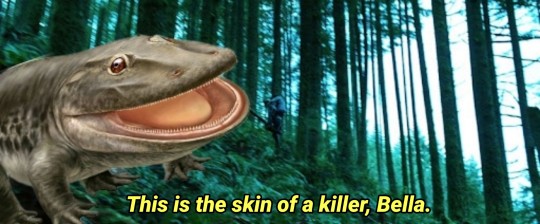
Don't be fooled by it's adorable face. This was once a top predator, when it roamed the earth 300 million years ago
5 notes
·
View notes
Text
2 notes
·
View notes
Photo

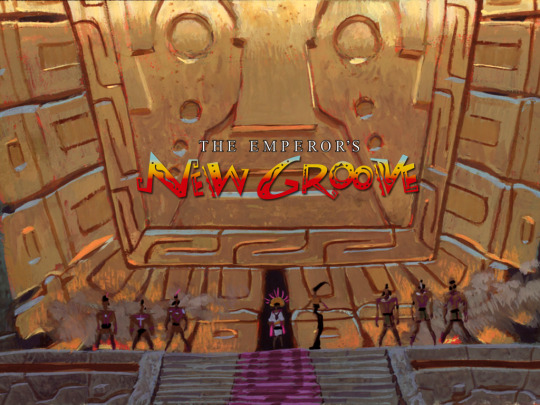


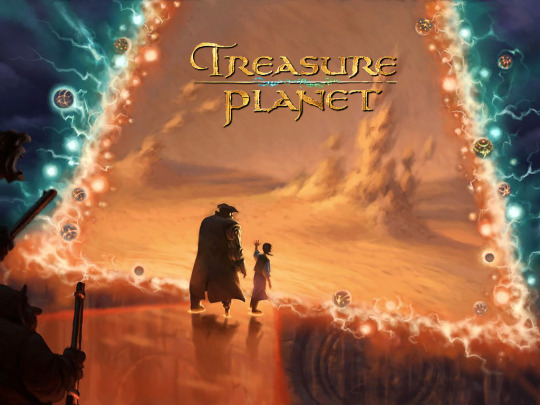





𝙳𝚒𝚜𝚗𝚎𝚢 𝚌𝚘𝚗𝚌𝚎𝚙𝚝 𝚊𝚛𝚝Iᴛʜᴇ ᴘᴏꜱᴛ-ʀᴇɴᴀɪꜱꜱᴀɴᴄᴇ [ᴇxᴘᴇʀɪᴍᴇɴᴛᴀʟ] ᴇʀᴀ (2000 - 2008)
#most of these films are underrated tbh#except chicken little#it's the worst disney movie ever imo#disney#disney concept art#the experimental era#the post-renaissance era#animation art#art#artwork#illustration#visual development#disney animation#disneyedit#dinosaur#the emperor's new groove gif#atlantis: the lost empire#lilo & stitch#treasure planet#brother bear#home on the range#chicken little#meet the robinsons#bolt#mine#disney eras
12K notes
·
View notes
Text
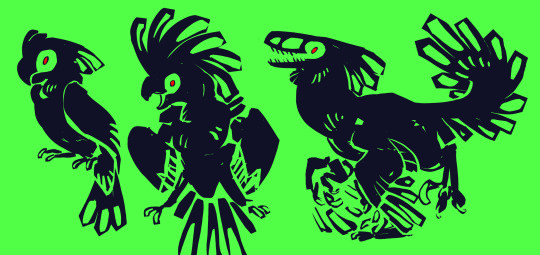
ubububu
#dinosaur#dromaeosaur#cockatoo#bird#sketch#eyestrain#read that new danny phantom graphic novel recently and thinking abt danny phantom makes me want to work with bright greens
3K notes
·
View notes
Photo

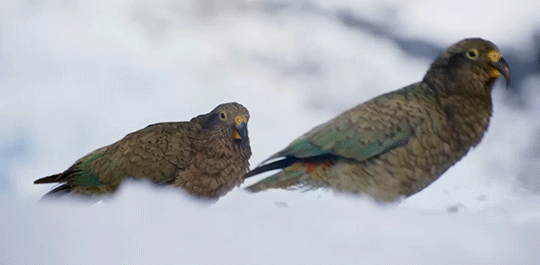
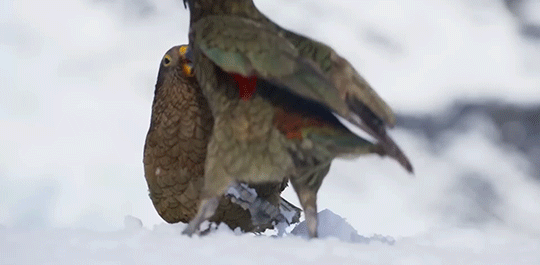


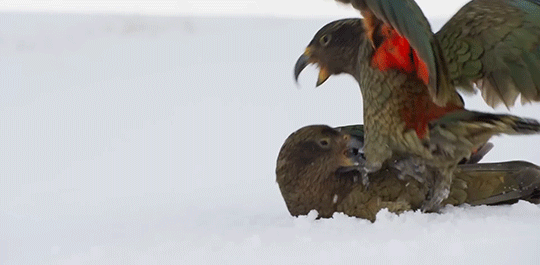

Playtime for young kea birds! There’s a benefit to this apparently carefree behavior. It helps establish long-lasting relationships between the youngsters and even diffuses tension.
David Attenborough | BBC Earth
#BBC Earth#birds#parrots#kea#snow#new zealand#aves#psittacidae#omnivore#welcome to Dinosaur Dance Party
11K notes
·
View notes
Text

an updated Raptor Red portrait
#utahraptor#dinosaurs#raptor red#paleoart#paleoblr#procreate#digital art#started drawing this for a comic but I don’t know how far that project will go. still I like this by itself#so I thought might as well post it since I haven’t been posting enough new stuff T_T sorry
980 notes
·
View notes
Text
anything can be a good omens au if you’re unhinged enough
#share ur wildest au ideas in the reblogs/comments if u want to pls#i’m still stuck on my h2o just add water au#crowley as rapunzel? gut-wrenching the hunger games au? superstore au with all the found family vibes?#riverdale au but they’re the parents oblivious to their kids establishing new time lines left and right#jurassic park au and they’re both dinosaurs just trying to munch on some grass#ineffable wives in a the wilds au making out on the beach while everyone else is fighting for their lives#glee au they’re teachers from another school reporting mr shue for being creepy af#crowley knows all the dances to high school musical in a modern family au#desperate housewives au but they don’t have any annoying husbands#barbie fairytopia au with rainbow wings do i need to say anything more#love island au they have a fake dating arrangement to get social media famous but they fall for each other anyways#claire’s au aziraphale gets his first piercing crowley shoots it#durex au crowley and aziraphale meet filming an ad for- [gunshot]#ok lemme stop here#good omens#aziracrow#gomens#good omens fics#good omens au#foolish talks#to write
875 notes
·
View notes
Text

#l'shanah tovah#dinosaurs#forgive my chicken scratch hebrew#if its too egregious ill take it out#have a sweet new year#rosh hashanah#my art#jumblr
11K notes
·
View notes
Text
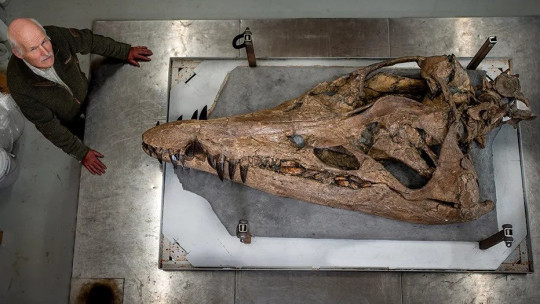
Gigantic Skull of Prehistoric Sea Monster Found on England’s ‘Jurassic Coast’
The remarkably well-preserved skull of a gigantic pliosaur, a prehistoric sea monster, has been discovered on a beach in the county of Dorset in southern England, and it could reveal secrets about these awe-inspiring creatures.
Pliosaurs dominated the oceans at a time when dinosaurs roamed the land. The unearthed fossil is about 150 million years old, almost 3 million years younger than any other pliosaur find. Researchers are analyzing the specimen to determine whether it could even be a species new to science.
Originally spotted in spring 2022, the fossil, along with its complicated excavation and ongoing scientific investigation, are now detailed in the upcoming BBC documentary “Attenborough and the Jurassic Sea Monster,” presented by legendary naturalist Sir David Attenborough, that will air February 14 on PBS.


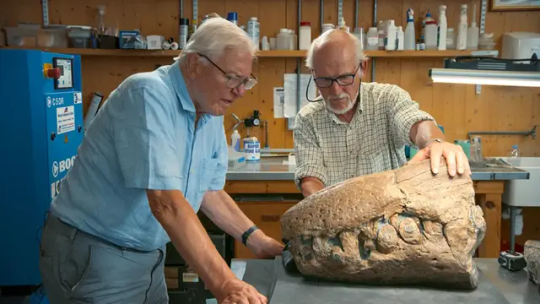
Such was the enormous size of the carnivorous marine reptile that the skull, excavated from a cliff along Dorset’s “Jurassic Coast,” is almost 2 meters (6.6 feet) long. In its fossilized form, the specimen weighs over half a metric ton. Pliosaurs species could grow to 15 meters (50 feet) in length, according to Encyclopaedia Britannica.
The fossil was buried deep in the cliff, about 11 meters (36 feet) above the ground and 15 meters (49 feet) down the cliff, local paleontologist Steve Etches, who helped uncover it, said in a video call.
Extracting it proved a perilous task, one fraught with danger as a crew raced against the clock during a window of good weather before summer storms closed in and the cliff eroded, possibly taking the rare and significant fossil with it.
Etches first learned of the fossil’s existence when his friend Philip Jacobs called him after coming across the pliosaur’s snout on the beach. Right from the start, they were “quite excited, because its jaws closed together which indicates (the fossil) is complete,” Etches said.
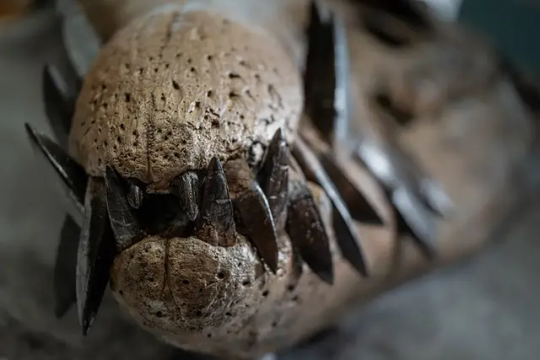

After using drones to map the cliff and identify the rest of the pliosaur’s precise position, Etches and his team embarked on a three-week operation, chiseling into the cliff while suspended in midair.
“It’s a miracle we got it out,” he said, “because we had one last day to get this thing out, which we did at 9:30 p.m.”
Etches took on the task of painstakingly restoring the skull. There was a time he found “very disillusioning” as the mud, and bone, had cracked, but “over the following days and weeks, it was a case of …, like a jigsaw, putting it all back. It took a long time but every bit of bone we got back in.”
It’s a “freak of nature” that this fossil remains in such good condition, Etches added. “It died in the right environment, there was a lot of sedimentation … so when it died and went down to the seafloor, it got buried quite quickly.”

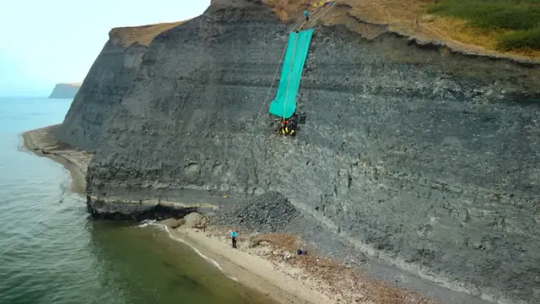

Fearsome top predator of the seas
The nearly intact fossil illuminates the characteristics that made the pliosaur a truly fearsome predator, hunting prey such as the dolphinlike ichthyosaur. The apex predator with huge razor-sharp teeth used a variety of senses, including sensory pits still visible on its skull that may have allowed it to detect changes in water pressure, according to the documentary.
The pliosaur had a bite twice as powerful as a saltwater crocodile, which has the world’s most powerful jaws today, according to Emily Rayfield, a professor of paleobiology at the University of Bristol in the United Kingdom who appeared in the documentary. The prehistoric marine predator would have been able to cut into a car, she said.
Andre Rowe, a postdoctoral research associate of paleobiology at the University of Bristol, added that “the animal would have been so massive that I think it would have been able to prey effectively on anything that was unfortunate enough to be in its space.”
By Issy Ronald.
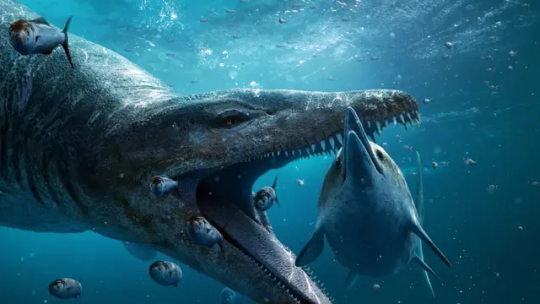
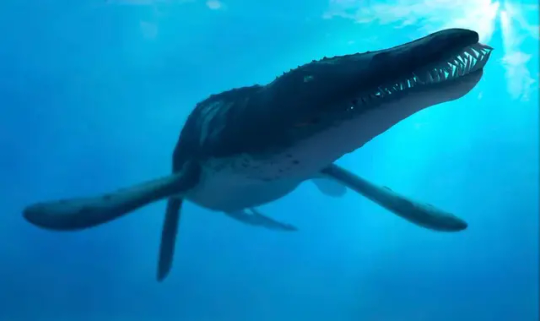
#Gigantic Skull of Prehistoric Sea Monster Found on England’s ‘Jurassic Coast’#Dorset England#pliosaur#jurassic#fossil#prehistoric#dinosaur#paleobiology#palaeontologists#archaeology#archeolgst#history#history news#ancient history#Sir David Attenborough#nature#naturalist
589 notes
·
View notes
Text

🩸 MIMIC 🩸
#gore cw#dromaeosaur#dromaeosauridae#dinosaurs#paleoart#horror art#illustration#happy new year i’m bored of uninspired and outdated dinosaur/paleo mainstream media so made this
4K notes
·
View notes
Text
🐉 Long before the development of paleontology as we know it, people unearthed fossilized bones and believed they had found the remains of dragons from an earlier age.
🐉 Happy Year of the Dragon! What animal are you? Emojis only.
#amnh#museum#fossil#dinosaur#natural history#science#paleontology#nature#animals#year of the dragon#lunar new year#chinese new year#did you know#fact of the day#dragons
501 notes
·
View notes